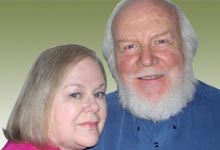It is always interesting to look at early industries in a town, and New Westminster has a varied collection to examine. There were those connected to lumber, fishing, shipbuilding, foundries, brewing, and shipping – all of which we would expect, given the location of the city. But there were others as well, some less obvious.
One, the first of its kind in the Lower Mainland, was called Mainland Tannery, owned by James Rousseau.
The tannery operated for many years out of an industrial site in Sapperton near Brunette Avenue, close to today’s Rousseau Street, while its store was on Columbia Street, opposite the telegraph offices.
The tannery processed animal skins and hides, while the store sold boots, shoes and gloves made from leather tanned here and elsewhere. An article from 1888 reports on the industry’s site and operation.
“The different departments of the tannery are complete in every detail, Mr. Rousseau having spared no pains or expense to make his establishment first-class in every particular.”
The machinery was powered by a 10 horse-power engine – powerful for its day. The description of the various departments gives us a good idea of the size of the overall operation.
There was a rolling room (29 by 30 feet), bark shed (24 by 30 feet), leech room (30 by 12 feet), layaway room (29 by 30 feet), as well as a curing and drying room (29 by 30 feet). The room’s name usually represents the use to which it was put. For example, the “bark” shed held the bark and leaves that supplied the needed tannins.
Besides these five major areas, there was also a beamhouse which, in the tannery business, covers all the steps of making leather between curing and tanning. All these stages of the process involved vats, and the report identified their number and purpose: liquor (6), soak (1), lime (3), and bate (1 for softening). The steps were soaking, liming, unhairing and scudding, deliming and bating, and pickling. And what did this Sapperton industry produce in 1888, other than the leather sold in its store as boots and shoes?
“The principal lines manufactured are harness, sole, skirting, calf, kip, upper, sheepskin, and lace leathers. Large numbers of furs are also tanned.”
Rousseau claimed the “oak-tanned lace leather” to be “the best manufactured in Canada.”
Large quantities of the locally produced leathers were shipped across Canada to cities such as Montreal, Ottawa and Victoria and Rousseau “had several chances of selling his yearly output to a large leather company in the east.”
A local ad for Rousseau’s store claimed they always had on hand “a full and complete stock of leather of all descriptions and every kind. His stock of boots and shoes is unequalled in the city, including full importations of Ladies’ French Kids in great variety. A choice assortment of buckskin gloves.”
An important but little known part of New Westminster’s industrial heritage.



